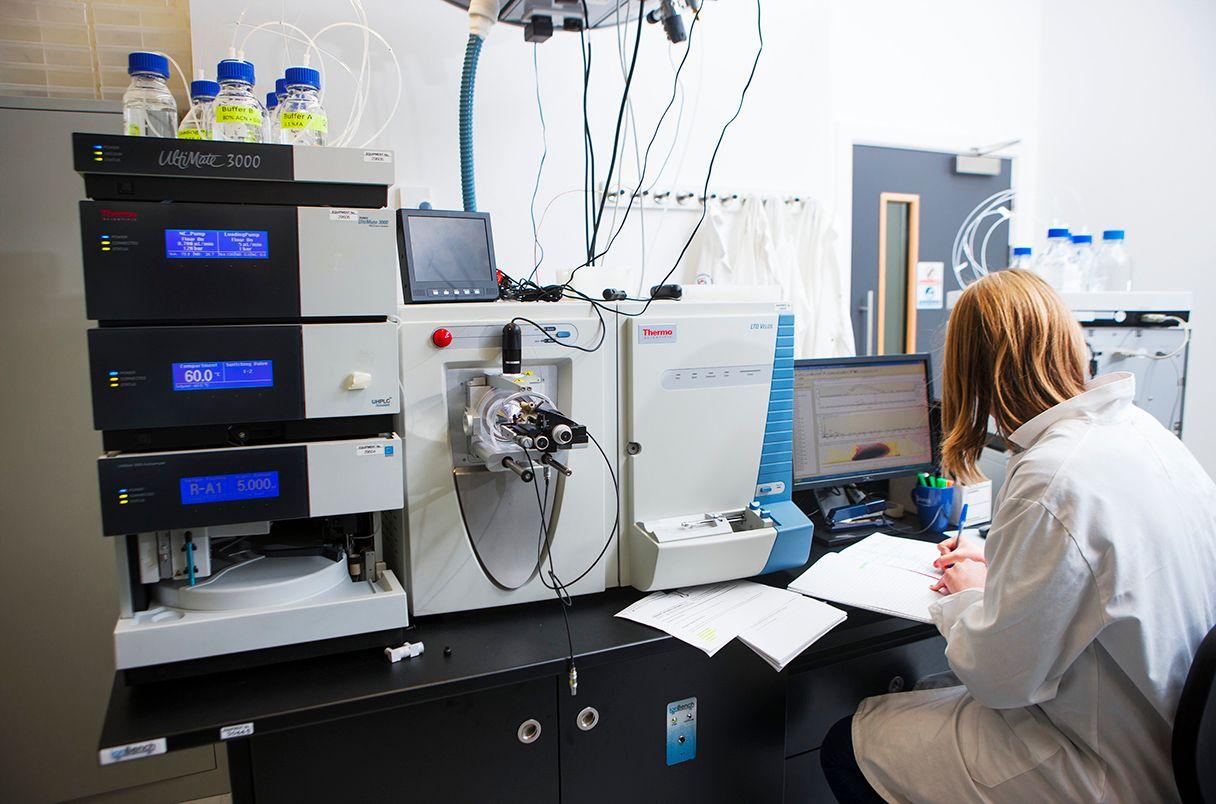AI Outperforms Experts in Predicting Quality of Lab-Grown 'Mini-Organs'
2 Sources
2 Sources
[1]
AI beats experts in predicting future quality of 'mini-organs'
Organoids -- miniature, lab-grown tissues that mimic organ function and structure -- are transforming biomedical research. They promise breakthroughs in personalized transplants, improved modeling of diseases like Alzheimer's and cancer, and more precise insights into the effects of medical drugs. Now, researchers from Kyushu University and Nagoya University in Japan have developed a model that uses artificial intelligence (AI) to predict organoid development at an early stage. The model, which is faster and more accurate than expert researchers, could improve the efficiency and lower the cost of culturing organoids. In this study, published in Communications Biology on December 6, 2024, the researchers focused on predicting the development of hypothalamic-pituitary organoids. These organoids mimic the functions of the pituitary gland, including the production of adrenocorticotropic hormone (ACTH): a crucial hormone for regulating stress, metabolism, blood pressure and inflammation. Deficiency of ACTH can lead to fatigue, anorexia and other issues that can be life-threatening. "In our lab, our studies on mice show that transplanting hypothalamic-pituitary organoids has the potential to treat ACTH deficiency in humans," says corresponding author Hidetaka Suga, Associate Professor of Nagoya University's Graduate School of Medicine. However, one key challenge for the researchers is determining if the organoids are developing correctly. Derived from stem cells suspended in liquid, organoids are sensitive to minute environmental changes, resulting in variability in their development and final quality. The researchers found that one sign of good progression is the broad expression of a protein called RAX at an early developmental stage, which often results in organoids with strong ACTH secretion later on. "We can track development by genetically modifying the organoids to make the RAX protein fluoresce," says Suga. "However, organoids intended for clinical use, like transplantation, can't be genetically modified to fluoresce. So our researchers must judge instead based on what they see with their eyes: a time-consuming and inaccurate process." Suga and his colleagues at Nagoya therefore collaborated with Hirohiko Niioka, Professor of the Data-Driven Innovation Initiative in Kyushu University, to train deep-learning models for the job instead. "Deep-learning models are a type of AI that mimics the way the human brain processes information, allowing them to analyze and categorize large amounts of data by recognizing patterns," explains Niioka. The Nagoya researchers captured both fluorescent images and bright-field images -- which show what the organoids look like under normal white light without any fluorescence -- of organoids with fluorescent RAX proteins at 30 days of development. Using the fluorescent images as a guide, they classified 1500 bright-field images into three quality categories: A (wide RAX expression, high quality); B (medium RAX expression, medium quality) and C (narrow RAX expression, low quality). Niioka then trained two advanced deep-learning models, EfficientNetV2-S and Vision Transformer, developed by Google for image recognition, to predict the quality category of the organoids. He used 1200 of the bright-field images (400 in each category) as the training set. After training, Niioka combined the two deep-learning models into an ensemble model to further improve performance. The research team used the remaining 300 images (100 from each category) to test the now optimized ensemble model, which classified the bright-field images of organoids with 70% accuracy. In contrast, when researchers with years of experience with organoid culture predicted the category of the same bright-field images, their accuracy was less than 60%. "The deep-learning models outperformed the experts in all respects: in their accuracy, their sensitivity, and in their speed," says Niioka. The next step was to check if the ensemble model was also able to correctly classify bright-field images of organoids without genetic modification to make RAX fluoresce. The researchers tested the trained ensemble model on bright-field images of hypothalamic-pituitary organoids without fluorescent RAX proteins at 30 days of development. Using staining techniques, they found that the organoids the model classified as A (high quality) did indeed show high expression of RAX at 30 days. When they continued culturing, these organoids later showed high secretion of ACTH. Meanwhile, low levels of RAX, and later ACTH, was seen for the organoids the model classified as C (low quality). "Our model can therefore predict at an early stage of development what the final quality of the organoid will be, based solely on visual appearance," says Niioka. "As far as we know, this is the first time in the world that deep-learning has been used to predict the future of organoid development." Moving forward, the researchers plan to improve the accuracy of the deep-learning model by training it on a larger dataset. But even at the current level of accuracy, the model has profound implications for current organoid research. "We can quickly and easily select high-quality organoids for transplantation and disease modeling, and reduce time and costs by identifying and removing organoids that are developing less well," concludes Suga. "It's a game-changer."
[2]
AI beats experts in predicting future quality of 'mini-organs'
Organoids -- miniature, lab-grown tissues that mimic organ function and structure -- are transforming biomedical research. They promise breakthroughs in personalized transplants, improved modeling of diseases like Alzheimer's and cancer, and more precise insights into the effects of medical drugs. Now, researchers from Kyushu University and Nagoya University in Japan have developed a model that uses artificial intelligence (AI) to predict organoid development at an early stage. The model, which is faster and more accurate than expert researchers, could improve the efficiency and lower the cost of culturing organoids. In this study, published in Communications Biology on December 6, 2024, the researchers focused on predicting the development of hypothalamic-pituitary organoids. These organoids mimic the functions of the pituitary gland, including the production of adrenocorticotropic hormone (ACTH): a crucial hormone for regulating stress, metabolism, blood pressure and inflammation. Deficiency of ACTH can lead to fatigue, anorexia and other issues that can be life-threatening. "In our lab, our studies on mice show that transplanting hypothalamic-pituitary organoids has the potential to treat ACTH deficiency in humans," says corresponding author Hidetaka Suga, Associate Professor of Nagoya University's Graduate School of Medicine. However, one key challenge for the researchers is determining if the organoids are developing correctly. Derived from stem cells suspended in liquid, organoids are sensitive to minute environmental changes, resulting in variability in their development and final quality. The researchers found that one sign of good progression is the broad expression of a protein called RAX at an early developmental stage, which often results in organoids with strong ACTH secretion later on. "We can track development by genetically modifying the organoids to make the RAX protein fluoresce," says Suga. "However, organoids intended for clinical use, like transplantation, can't be genetically modified to fluoresce. So our researchers must judge instead based on what they see with their eyes: a time-consuming and inaccurate process." Suga and his colleagues at Nagoya therefore collaborated with Hirohiko Niioka, Professor of the Data-Driven Innovation Initiative in Kyushu University, to train deep-learning models for the job instead. "Deep-learning models are a type of AI that mimics the way the human brain processes information, allowing them to analyze and categorize large amounts of data by recognizing patterns," explains Niioka. The Nagoya researchers captured both fluorescent images and bright-field images -- which show what the organoids look like under normal white light without any fluorescence -- of organoids with fluorescent RAX proteins at 30 days of development. Using the fluorescent images as a guide, they classified 1500 bright-field images into three quality categories: A (wide RAX expression, high quality); B (medium RAX expression, medium quality) and C (narrow RAX expression, low quality). Niioka then trained two advanced deep-learning models, EfficientNetV2-S and Vision Transformer, developed by Google for image recognition, to predict the quality category of the organoids. He used 1200 of the bright-field images (400 in each category) as the training set. After training, Niioka combined the two deep-learning models into an ensemble model to further improve performance. The research team used the remaining 300 images (100 from each category) to test the now optimized ensemble model, which classified the bright-field images of organoids with 70% accuracy. In contrast, when researchers with years of experience with organoid culture predicted the category of the same bright-field images, their accuracy was less than 60%. "The deep-learning models outperformed the experts in all respects: in their accuracy, their sensitivity, and in their speed," says Niioka. The next step was to check if the ensemble model was also able to correctly classify bright-field images of organoids without genetic modification to make RAX fluoresce. The researchers tested the trained ensemble model on bright-field images of hypothalamic-pituitary organoids without fluorescent RAX proteins at 30 days of development. Using staining techniques, they found that the organoids the model classified as A (high quality) did indeed show high expression of RAX at 30 days. When they continued culturing, these organoids later showed high secretion of ACTH. Meanwhile, low levels of RAX, and later ACTH, was seen for the organoids the model classified as C (low quality). "Our model can therefore predict at an early stage of development what the final quality of the organoid will be, based solely on visual appearance," says Niioka. "As far as we know, this is the first time in the world that deep-learning has been used to predict the future of organoid development." Moving forward, the researchers plan to improve the accuracy of the deep-learning model by training it on a larger dataset. But even at the current level of accuracy, the model has profound implications for current organoid research. "We can quickly and easily select high-quality organoids for transplantation and disease modeling, and reduce time and costs by identifying and removing organoids that are developing less well," concludes Suga. "It's a game-changer."
Share
Share
Copy Link
Researchers from Japanese universities have developed an AI model that surpasses human experts in predicting the quality of organoids, potentially revolutionizing biomedical research and personalized medicine.

AI Model Revolutionizes Organoid Research
Researchers from Kyushu University and Nagoya University in Japan have developed an artificial intelligence (AI) model that outperforms human experts in predicting the quality of organoids, miniature lab-grown tissues that mimic organ function and structure. This breakthrough, published in Communications Biology on December 6, 2024, could significantly advance biomedical research, personalized medicine, and drug development
1
2
.Understanding Organoids and Their Challenges
Organoids are transforming biomedical research by offering potential breakthroughs in personalized transplants, improved disease modeling, and more precise drug testing. However, their development is highly sensitive to environmental factors, leading to variability in quality. The study focused on hypothalamic-pituitary organoids, which produce crucial hormones like adrenocorticotropic hormone (ACTH)
1
2
.The AI Solution
To address the challenge of determining organoid quality, the research team trained deep-learning models to predict organoid development at an early stage. They used two advanced models, EfficientNetV2-S and Vision Transformer, developed by Google for image recognition
1
2
.Methodology and Results
The researchers captured fluorescent and bright-field images of organoids with fluorescent RAX proteins at 30 days of development. They classified 1,500 bright-field images into three quality categories based on RAX expression. The AI model was trained on 1,200 images and tested on the remaining 300
1
2
.Key findings include:
- The AI model achieved 70% accuracy in classifying organoid quality.
- Human experts with years of experience achieved less than 60% accuracy.
- The AI outperformed experts in accuracy, sensitivity, and speed
1
2
.
Related Stories
Implications and Future Directions
This AI model represents a significant advancement in organoid research:
- It can predict organoid quality based solely on visual appearance at an early stage.
- It enables quick and easy selection of high-quality organoids for transplantation and disease modeling.
- It reduces time and costs by identifying and removing poorly developing organoids
1
2
.
The researchers plan to improve the model's accuracy by training it on a larger dataset. Even at its current level, the model has profound implications for organoid research and could accelerate advancements in personalized medicine and drug development
1
2
.Broader Impact on Biomedical Research
This breakthrough could have far-reaching effects on various areas of biomedical research:
- Personalized transplants: Improving the efficiency of organoid production for potential transplantation.
- Disease modeling: Enhancing the study of complex diseases like Alzheimer's and cancer.
- Drug testing: Providing more accurate platforms for testing the effects of medical drugs
1
2
.
As the first instance of using deep learning to predict organoid development, this research opens new avenues for AI applications in biomedical sciences, potentially accelerating discoveries and improving healthcare outcomes.
References
Summarized by
Navi
[1]
[2]
Related Stories
AI Outperforms Humans in Rapid Disease Detection from Tissue Images
15 Nov 2024•Science and Research

AI Outperforms Human Experts in Predicting Neuroscience Study Outcomes
28 Nov 2024•Science and Research

AI Model Predicts Gene Activity in Human Cells, Transforming Biological Research
09 Jan 2025•Science and Research

Recent Highlights
1
Grok faces global investigations as xAI blames users for AI-generated CSAM and deepfakes
Policy and Regulation

2
Hyundai to deploy 30,000 Atlas robots in car factories by 2028, beating Tesla to production
Technology

3
Instagram Chief Warns AI Images Are Outpacing Our Ability to Distinguish Real from Fake
Technology




